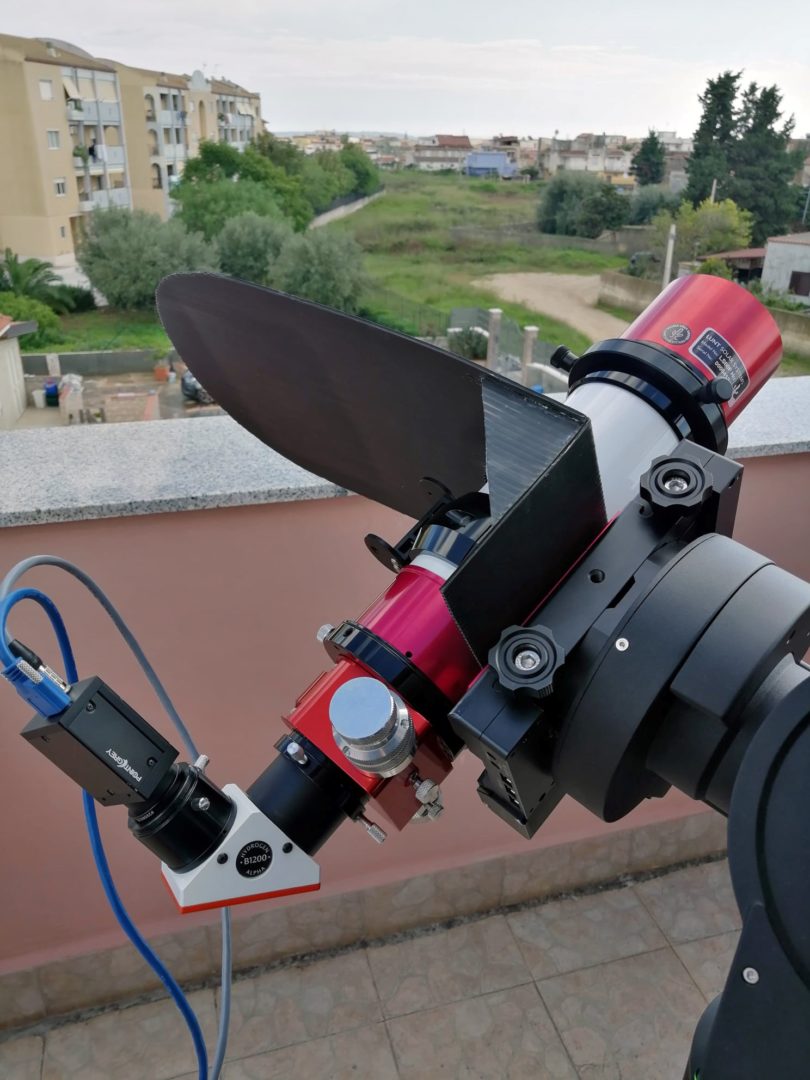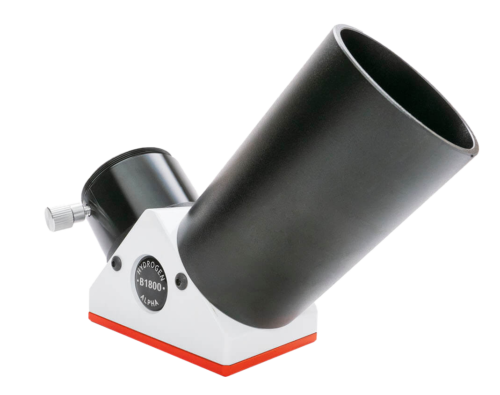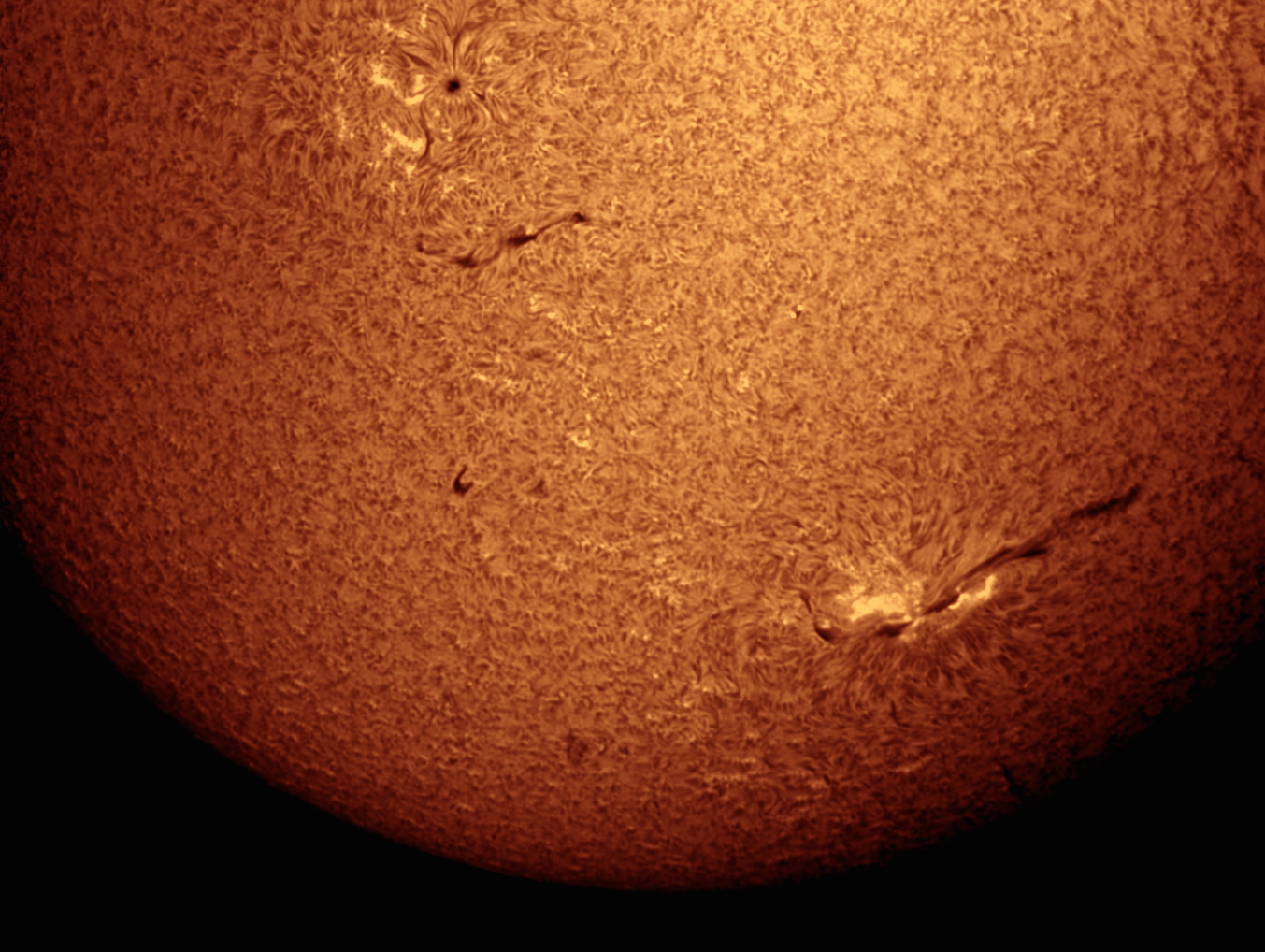
Imaging With Your Telescope
Capture thrilling images with your Lunt Telescope to show the world the amazing view through your lens
Lunt Telescopes were designed for direct visual use (viewing with an eyepiece) and imaging (capturing images with a camera). However, your Lunt Telescope configuration will be slightly different between the two applications.
The solar telescope creates a cone of light, focused onto an “image plane” directed at the back end of the telescope. The size and distance from the objective of this image plane is defined by the focal length of the system and the apparent size of the object (Sun).
When using the telescope in visual mode, with an eyepiece, the blocking filter itself and/or the focuser will be adjusted at a distance such that you are able to bring the Sun into focus in your eyepiece. If you find yourself not being able to achieve focus, you may need to adjust your blocking filter. Adjust the position of the blocking filter within the focuser (exposing more or less of the diagonal’s nose tube), and work with your focuser’s position.
This will also stay true for photographic use: depending on the style of camera utilized, you may be able to attach your camera directly to your Lunt Blocking Filter (as the eyepiece cup of the blocking filter can be unscrewed to expose traditional T- Threading). If your camera happens to use T-Threading, you will be able to screw in directly. Alternatively, you may need an adapter or to place your camera into the eyepiece cup for photography.
Lunt products were used by NASA to image the 2017 USA Eclipse from Carbondale, IL. Lunt standard products have also been used in the past by NASA for the transit of Venus and Mercury, and by National Geographic for the Easter Island Eclipse.
All of these were very successful live streaming events. Our products are ideally suited for imaging due to the ability get full disk images, rapid Doppler tuning, and the ease of CCD adaptation to our systems.
Image Size Considerations
Various eyepieces have various back focus requirements but most remain within a fairly standard length. This generally places the Blocking Filter at the smallest portion of the light cone allowing the user to use a smaller aperture Blocking Filter.
However, if the telescope is to be used in Imaging mode the slide tube and/or focuser will need to be racked in to bring the image plane onto the CCD surface. Generally speaking this can be as much as 50mm for larger systems.
This requirement for “in focus” effectively moves the aperture of the Blocking Filter up to a larger diameter of the light cone. Using a small (visual only) aperture Blocking Filter in imaging mode would effectively cut off the edges of the image. It also results in a vignetting of the image on the CCD.
The Sun is a fixed object. We can therefore pre-determine what size Blocking Filter is required after the decision of visual or imaging has been made as a function of the focal length of the telescope.
Photos Taken with Lunt Telescopes
View more examples of images taken with Lunt telescopes. Our customers frequently add new images, so come back often to see the latest!




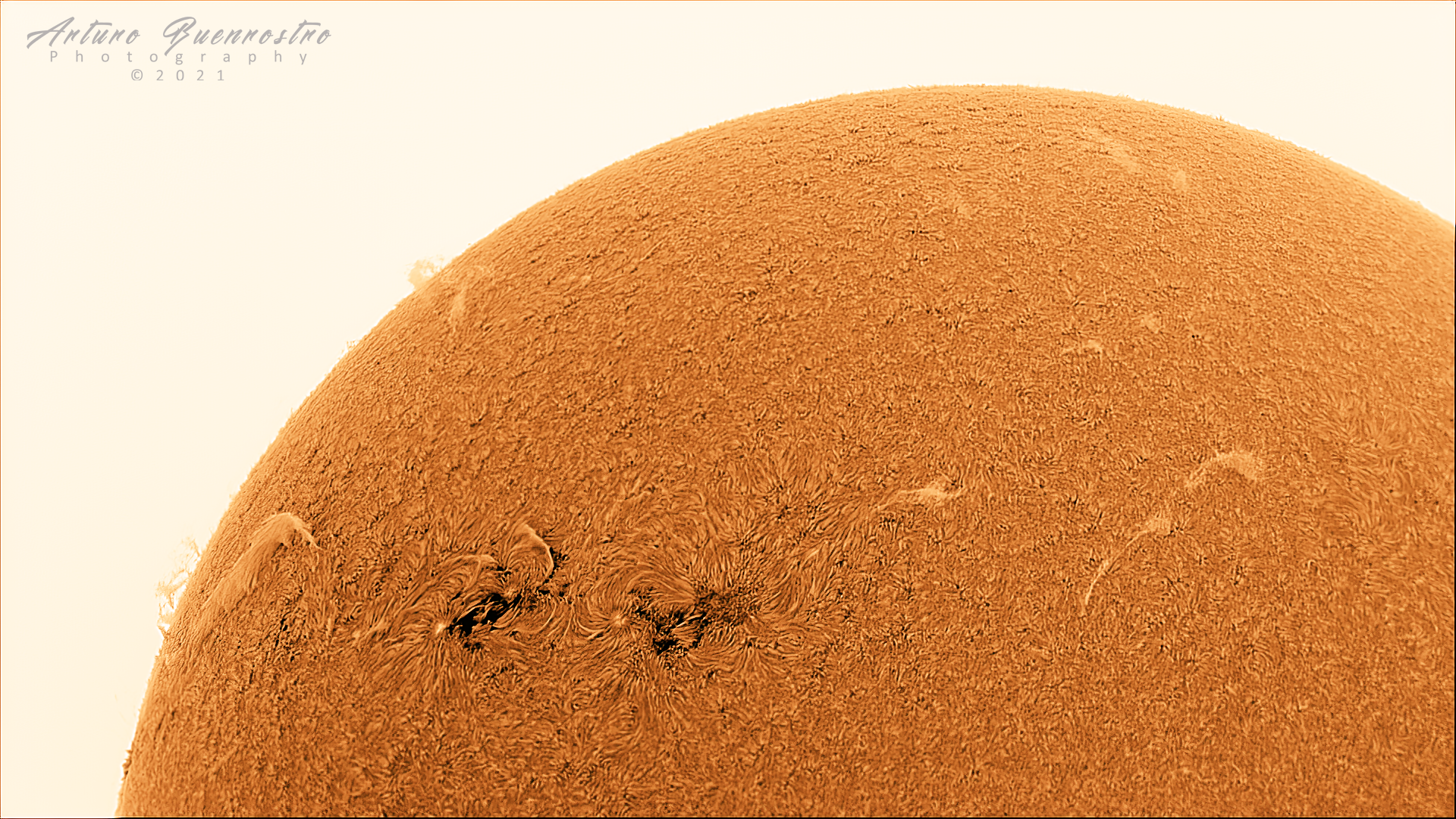

Use a Monochromatic Camera
H-alpha is a very narrow emission line centered at 656.28 nm. This narrow wavelength is found in the red area of the visible spectrum.
The Solar Telescope transmits only this small portion of the spectrum. It transmits no Blue or Green. The most ideal imaging system is a monochrome camera or webcam.
DSLRs, mirrorless cameras and color webcams have significant drawbacks when it comes to imaging monochromatic light.
The chip of the color camera contains sensors that are designed to capture light in the green, blue and red. Due to these sensors being very sensitive to the red portion of the spectrum they only utilize 1 sensor for every 3 sensors in the blue and green. It should also be noted that these chips also have a red/IR blocking filter placed over the sensors to reduce the red sensitivity of the camera making it easier to control exposure settings. This red cutoff filter typically starts slightly below the 656 nm line and significantly reduces the performance of the imaging system when used for H-alpha imaging.
Because only one 1 sensor in 4 are actually sensitive to the red, the camera is actually only using 1/4th of its CCD, significantly reducing resolution.
Software within the camera system also uses color balancing of all 4 sensors. The net result is that the red sensor will be “balanced” against the other sensors that received no light. This further reduces the image quality. The simple answer is that the software has no idea how red the reds are because it has no other point of reference. This typically creates washed out and muddy red images that require significant retouch and post-processing.
Monochrome cameras are not only ideal, they are simpler to use and are relatively cheap. Monochrome cameras utilize all sensors as a photon dump and are excellent at defining contrast. The resulting image can be colorized by a simple method of turning the darker shades of grey to red and the mid shades to a lighter more orange hue. Some images even create a color pallet that includes yellow.
Several popular manufacturers of DSLR and mirrorless cameras have recently introduced monochromatic options, so if you’re invested in a particular brand of camera equipment, it might be worth looking into.
Lunt uses a monochrome camera system in all our live feeds (including the NASA Eclipse). We do not stack. We simply colorize and re-size in real time prior to broadcast.
Example Photos
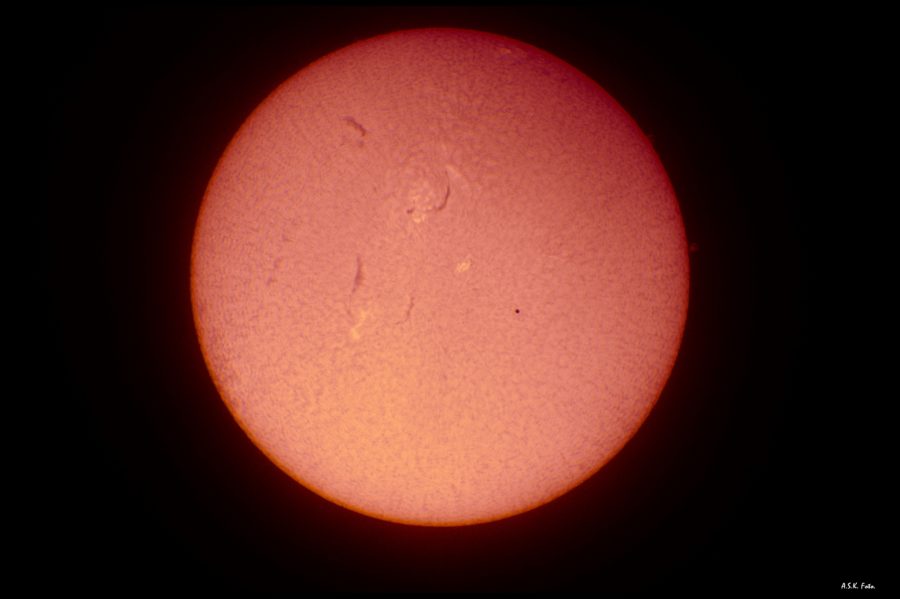

Blocking Filter Considerations
Each of our telescopes have at least 2 blocking filter options. For instance, the Lunt 100 mm Universal Telescope can be paired with a B1200, B1800 or B3400. When choosing a blocking filter for your scope keep in mind that the smallest blocking filter option will be for visual use.
As you go up in size you increase the field of view around the disk image. For imaging the best choice will be the larger blocking filter as it will have ample field of view to accommodate the needed in-focus for your camera. If you want to both view and image we also recommend the larger blocking filter as each one can be used for both purposes.
Attaching a camera to the blocking filter is easy as we have T-threads on the 1.25″ eyepiece adapter that comes standard on our blocking filters.
If you find you need more in-focus, simply unthread the 1.25″ eyepiece adapter to reveal another set of T-threads located right on the diagonal body. Generally, you will need an adapter. This can vary depending on your camera. In most cases a T/C adapter ring does the trick.
We offer diagonal and straight-through blocking filter configurations depending on how you like to set up. If using a DSLR you may opt for a straight-through style as this format will be more forgiving to the camera “bump” found at the front lens area of most DSLR cameras. Some users only plan to use the scope for imaging, and they will also opt for the straight-through. The image quality with either the straight-through or diagonal will be the same.
When seeking out a camera, whether it be a new purchase or something in your existing equipment, the solar disk image size will also be an important piece of information. If you are looking to do single-shot, full disk images you will want to select a camera that has a chip that is slightly larger than the disk image through the telescope.
Alternatively, some imagers that have a camera with a smaller chip size can create the full disk image by using the mosaic technique. This is where you take multiple shots of different regions of the disk and piece them together. To help you in your camera selection each scope listing on our website has the image size listed for you so feel free to check it out.
Focuser Considerations
With imaging, focus is the name of the game. Lunt telescopes can be equipped with a wide variety of focuser options, and choosing the correct one is important.
1.25-inch Focusers
The 1.25″ Helical focuser comes standard on our 40 mm and 50 mm telescopes. Offering a smooth turning range and a locking screw, generally this focuser does best for direct viewing. When imaging, it may be beneficial to consider the Starlight Feather Touch Focuser, 1.25″. Easily interchangeable, this focuser screws directly into your 50 THa or 40 mm assembly and can be very helpful with the added weight of cameras or accessories.
2-inch Focusers
Lunt is proud to offer our very own in-house Crayford Focuser, compatible with all of our Telescopes that accept 2″ focusers. Our dual speed focuser is manufactured in our very own machine shop, and was created with your needs in mind.
Offering smooth travel and brass compression rings to keep your accessories safe, the new Lunt Crayford comes standard on our top model telescopes, and is available now! Standard rack and pinion focusers also are available for Lunt Universal systems, alongside Starlight Feather Touch focusers as an upgrade choice.
